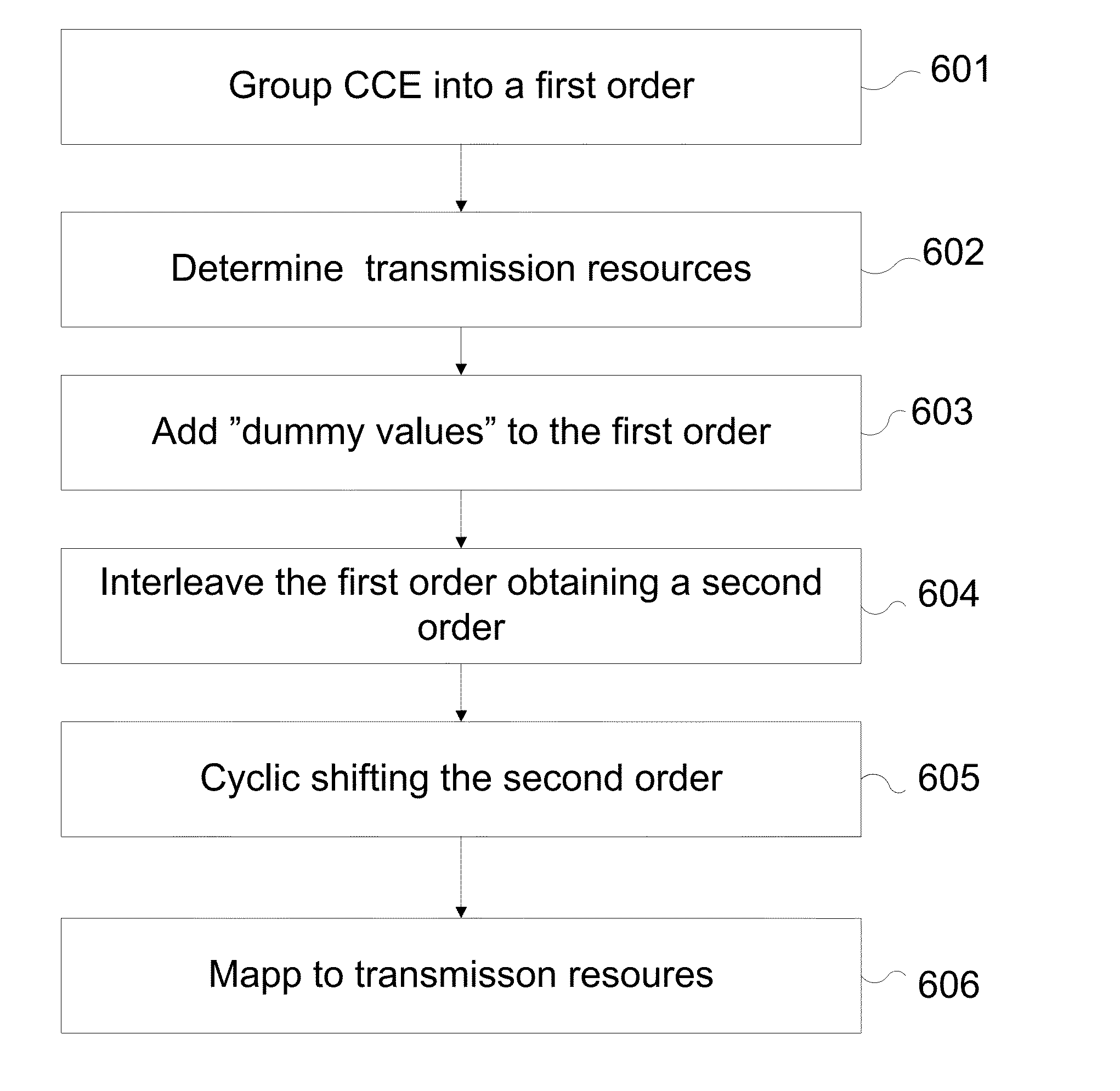Interference Randomization of Control Channel Elements
- Summary
- Abstract
- Description
- Claims
- Application Information
AI Technical Summary
Benefits of technology
Problems solved by technology
Method used
Image
Examples
Embodiment Construction
[0046]In the following, various embodiments of the invention will be described. The approach described below is intended for flexibility with performance approaching that of the random interleaving approach described above. Considering the 72 symbol group example discussed above, where the cell-specific cyclic shift is intended to randomize interference between cells. However, when changing CCE or CCE group sizes, or bandwidth or OFDM symbol allocations in the control channel transmission resources, it becomes difficult to design an interleaving pattern to handle this variability. Consider the case of having 72 symbol groups within a CCE transmitted within a 5 MHz bandwidth. There are only 48 sub-carriers available in the first OFDM symbol, therefore either two or three OFDM symbols must be used to transmit the entire CCE. FIG. 4 shows the two-symbol structure with resource block 40 while FIG. 5 shows the three symbol structure of the control channel transmission resources with reso...
PUM
 Login to View More
Login to View More Abstract
Description
Claims
Application Information
 Login to View More
Login to View More - R&D
- Intellectual Property
- Life Sciences
- Materials
- Tech Scout
- Unparalleled Data Quality
- Higher Quality Content
- 60% Fewer Hallucinations
Browse by: Latest US Patents, China's latest patents, Technical Efficacy Thesaurus, Application Domain, Technology Topic, Popular Technical Reports.
© 2025 PatSnap. All rights reserved.Legal|Privacy policy|Modern Slavery Act Transparency Statement|Sitemap|About US| Contact US: help@patsnap.com



